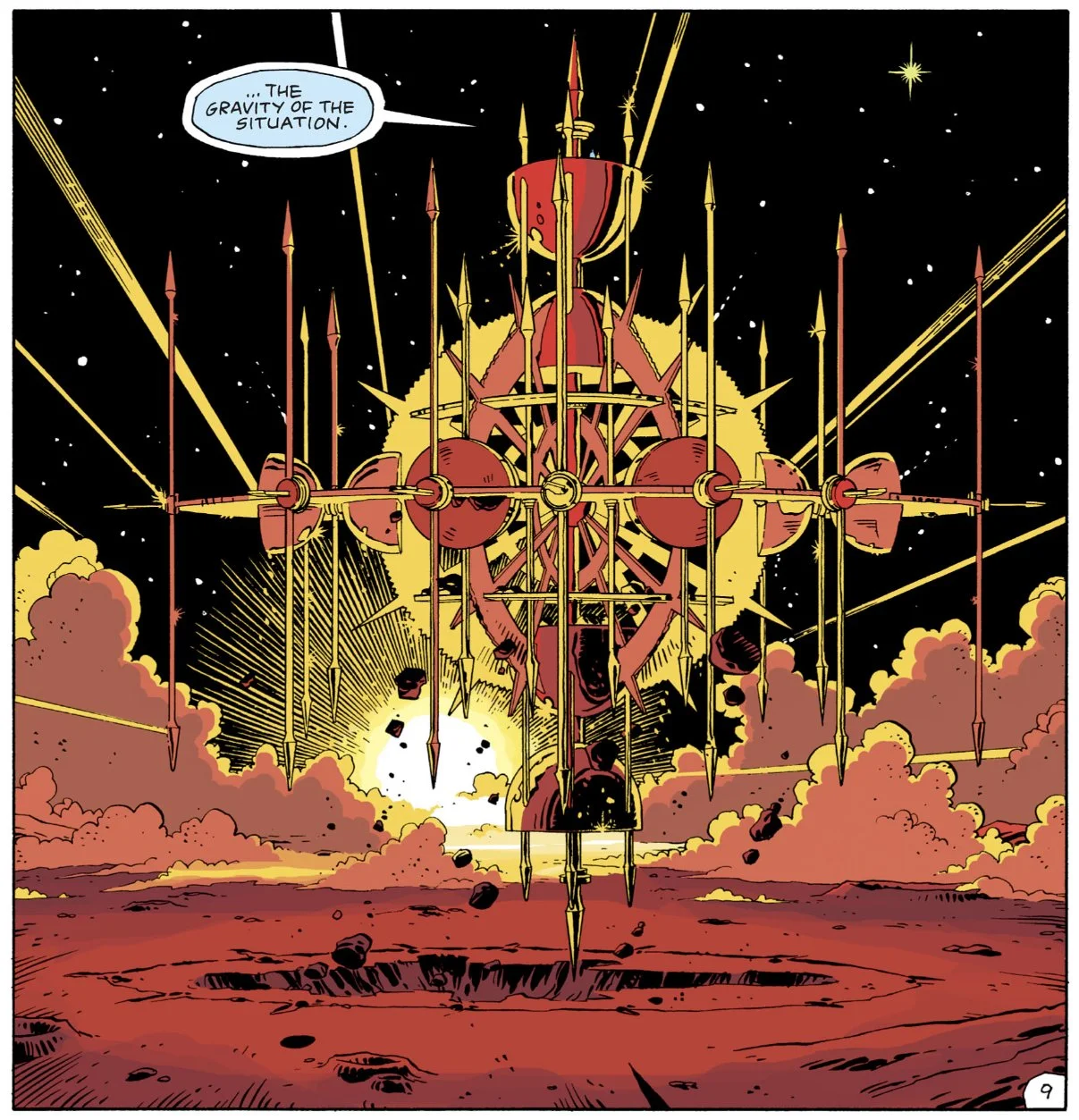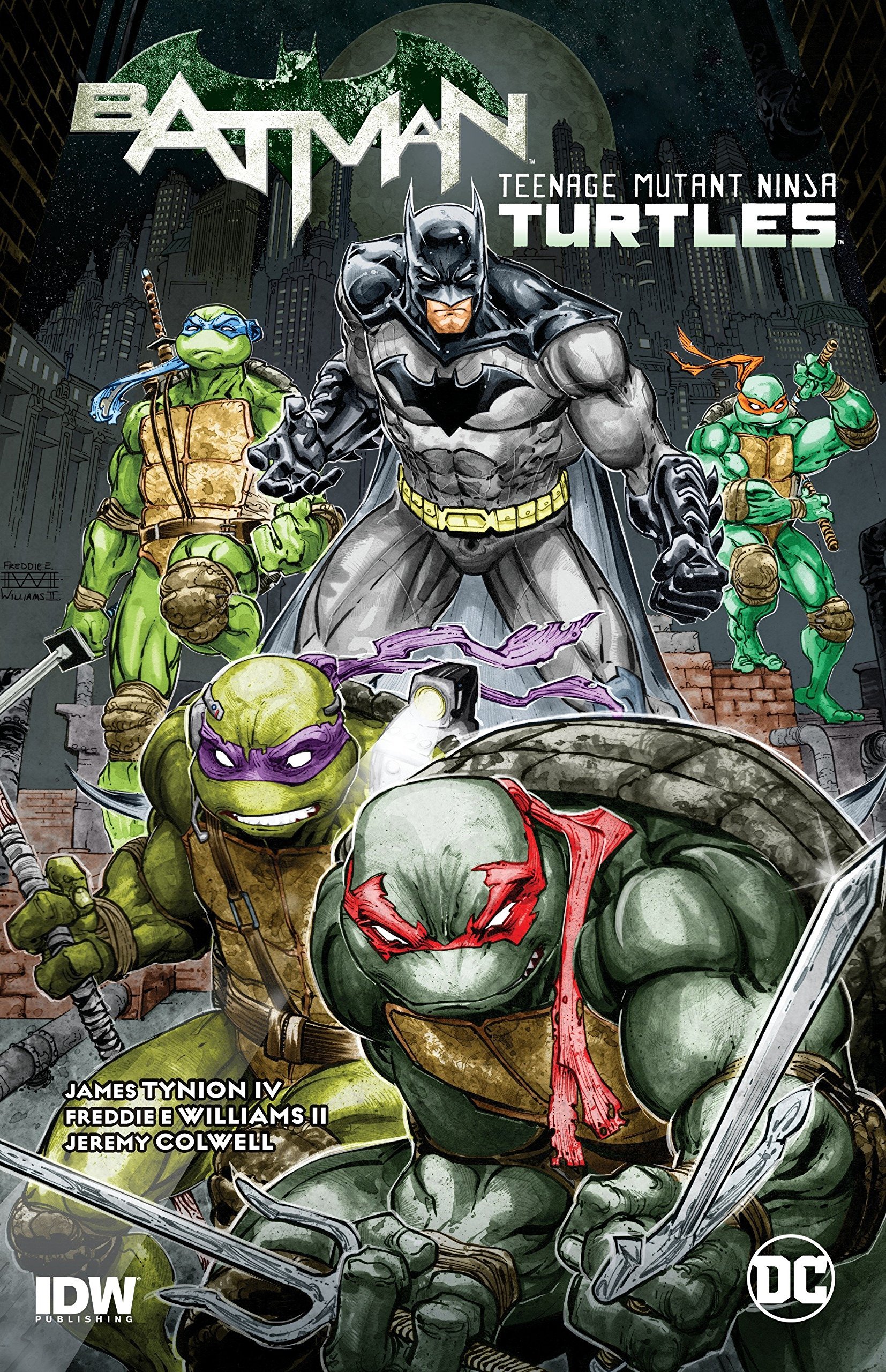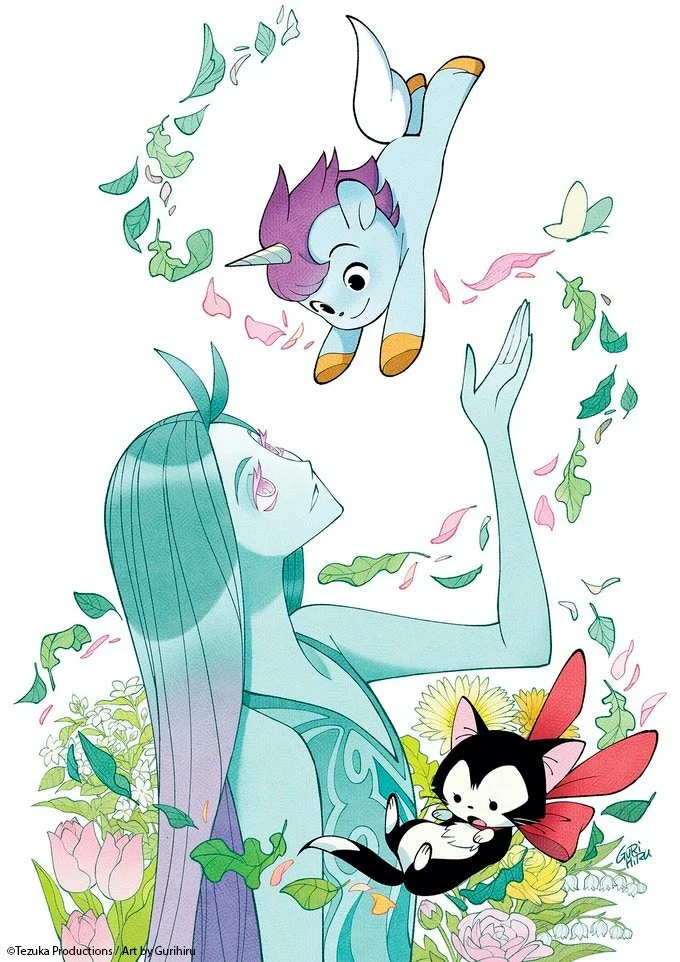The Bomb Is Us, On Homunculus by Joe Sparrow
Arpad Okay — Daisy can’t move. Daisy weighs two thousand pounds, has no legs or arms to move with, no head to turn, is a cube. An artificially intelligent metal mass constructed in Veronica’s laboratory. Not. Going. Anywhere. As a result, Homunculus is one single shot for the entire book. A locked shot, not a static image throughout, where the bulk of the book plays out with Veronica as the only person on stage. With that stage she shares an education of the whole of human history, one glimpse at a time (by the panel), and when the fragility of people comes down hard and clears the very footlights and floorboards from the view of its artificial audience as it sweeps said stage, Homunculus becomes the cycle of the seasons. Things go wrong, real wrong, and then they go beyond. A friendship and then the end and then the beginning again.
A fascinating play at style and engagement in sequential art. The lab stays structurally the same. The go board gets pulled out and easels are wheeled around, but the door to the room never moves, the drop ceiling tiles stay in place, things clutter Daisy’s space the more the AI intellectually expands, but lab is lab. Drawn in a faint blue monochrome that lacks the definite contours that everything being paid attention to is afforded, Veronica and all her wonders. Objects from the background gain color contrast that solidifies them as they bring news of the world outside the lab, of war. After the war — Daisy was built to last I guess — instead of the expansion of knowledge built from the past, we watch the present unfold for a while. A decomposition of things, natural rebirth in decay, foragers that exist in the shadow of the collapse. Who can escape the inevitable atrophy of infinity?
Who indeed. We are always trapped on the wrong side of the page when we fear for characters we come to care for, an intensity amplified with Homunculus' shot immobility. Powerless witness is a tool I’m more familiar with in film, something like The Passion of Joan of Arc or Magnolia, where a tortured face fills the frame, we have nowhere else to look (for what else needs to be seen). Fixed perspective becomes forced perspective when looking away isn’t an option. The challenge is to use the repetition instead of let it habituate the story’s impact — Secret Warriors #0 did something along the same conceptual lines as the films I’ve mentioned, every panel in the comic is the same panoramic shot with the narrator centered, whatever she’s doing, usually going through it. Homunculus is the flip of that, always out, perspective the cement of immobility, and still building on the relationship between seeing and seen.
A companionship book. Built up (til the bombs drop) on two friends but also the history of thought. No place for that in defense spending! Time spent putting together a portrait of amity and then have fate swiftly clear the table for the next guests. Sparrow sets this piece of art apart from most apocalypse stories with what comes after: we are given a prolonged period in which to reflect on the size of what was lost. It’s a narrative tour de force but a marketing risk to make a reader watch mushrooms grow from a tree stump when they can interrupt the reading of the book itself to pause and reflect without the author using up precious page space. Don’t worry, you will have to put this down on occasion in that fashion as well, to dab the tears in your eyes, but seriously this feels like Sparrow aiming for something even higher. The power of Homunculus is mighty and metered.
I know it drives some people crazy but I love that all this time is spent building a relationship to end the book like bam. But one thing I love is a story that’s a complete fragment. It’s what draws me to OGNs in general, the satisfying chunk, but the themes Sparrow explores in this comic definitely play on how good times can seem brief. How much we get, what we have after. The read formed a bond between myself, the characters, and their friendship; I wasn’t ready for war to separate them. But the end isn’t the end, the manner in which things persevere is both shown to us and then also taken away, this time with the real close of the book. Your imagination is made to bear the burden of what comes from the point where the story caps off. The bell has rung but Sparrow tags you into the ring to keep the game going anyway.
Homunculus understands what the bomb is (“and it is us”). The potential reduction of humanity and history to fragment status via international warfare. Veronica takes some glancing blows from bureaucracy that show the greater impact the military-industrial complex has on the shape and direction of scientific achievement. Though I suppose that there being no room in the budget for an artificial intelligence that enjoys playing go is a better outcome than taking that pleasure and turning it into a Time Out of Joint prison of involuntary military attack strategy. Time runs out before Daisy’s future can be decided, so Daisy outlasts it. A thing to consider when pondering dollars and value is what defense budgets are defending.
Simple is a fair assessment of Joe Sparrow’s art style, but a deceiving one. The work doesn’t lack for detail (in addition to being a fascinating execution of concept), but it is smooth, polished, minimalist. Bubble blocks and spacious shapes and the total absence of classically rendered anatomy. The statue is of Dennis the Menace not Socrates. Comics being for kids not adults leads to a lot of kid aesthetics paired with traumatic content in adult books for the power in their contrast. At its most sophisticated it’s probably Jaime doing Bob Bolling to tell family heartbreak stories in Penny Century. If you want to contemplate this serious and simple in conflict, look to the masterclass on the industry from the inside out, Dork. But outside the comic shop spinner rack world, it isn’t contradiction. The cyberpunk issue of the Ex.Mag anthology (any of them, actually), or drop genre fiction completely and get devastated by Sophia Foster-Diminio’s Sex Fantasy. Then uh come back and read Homunculus.
My appreciation for stuff like The Twin Knights has come more recently but I’ve been reading folks for decades who were inspired by Tezuka and refit his balloon art style to fit modern aesthetics. I love Epoxy, and Homunculus captures that same time traveling art spirit that allows Atom or Uran to vibe in sweatpants with a nice cup of tea. There’s the cartoonish concrete contour, it makes everything look set. Precise as a perfect pop song. Bedroom futurism like the illustrations of diasukerichard, with the zine sensibility (and elegance) of Eleanor Davis. Davis and Sparrow both tap something ‘70s, somewhere far off the map from Sesame Street and Conjunction Junction but in the same land. Homunculus is elsewhere.
That said, it is a lot of two friends hanging out. You’ve got a lot of frame-within-frame in a sense, since Veronica plays the teacher and is constantly presenting intellectual sustenance for Daisy’s edification. But the story is carried forward on the content of word balloons. The frequency of setting and subject suits a relationship book: most of us learn the kind of stuff Daisy does at a desk, we sit across the table from an acquaintance, the only interruption of your coversation is when somebody flips a record. The long silent decomposition of Daisy’s facility, the wildlife that overgrows its ruin, and its eventual crumbling under the weight of infinity is still telling a story. The silence without Veronica in counterpoint is the point.
The last ten or fifteen years has seen a surge of post-apocalyptic art, spilling outside the horror and sci-fi genres to become foundational aesthetics. A generation has grown up on Adventure Time! Meanwhile, I’m over here enjoying all the Simon Roy books doing Jack Vance in a post-Nostromo world. There’s oodles of dystopia to ponder these days, traditional, off brand, family size; we’re all curious to see how humanity hangs on, what humanity looks like afterwards. Sparrow is more Cordwainer Smith’s Instrumentality of Mankind than Vance’s Dying Earth, or a recent new comic favorite of mine, Toransuke Shimada’s Robo Sapiens: Tales of Tomorrow. You don’t jump in to the deep end, but travel through the end and beyond it, in real time.
The program of no military value ends up being what stores the whole of our history and survives the fall of the society that built it. If a world falls in the woods and no one is around to hear it? It’s really the impact of Veronica’s severance from Daisy that’s where the stress is coming from. But as the book draws to a close, it does beg the larger question of who we preserve the past for. Homunculus the living archive is a vision of dystopia and utopia in reaction to each other. The Svalbard Vault of math, philosophy, old jokes, good records, the spice of life.
Homunculus by Joe Sparrow
Homunculus
Words and art by Joe Sparrow
Published by Shortbox
A machine at the end of the world... In the near future, a young scientist and her sentient creation struggle to understand, and be understood by, the world around them. A story about love and learning, death and time, told across the years.
Price: $20
Buy It Here: Physical
Read Arpad’s piece on The Tale of One Bad Rat by Bryan Talbot, This Book Is A Noun!
Arpad Okay’s degree in journalism and education means he can’t ever seem to separate the art from the anthropology in his features. Arpad writes about comics and culture for DoomRocket and The Beat and tweets about the world from @arpadokay












